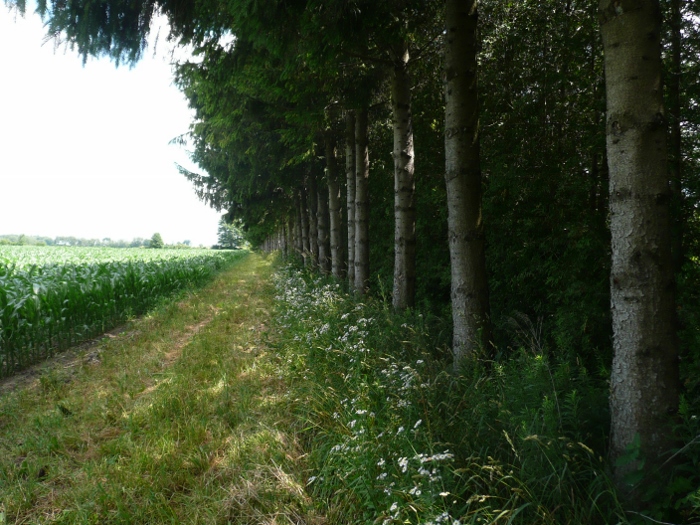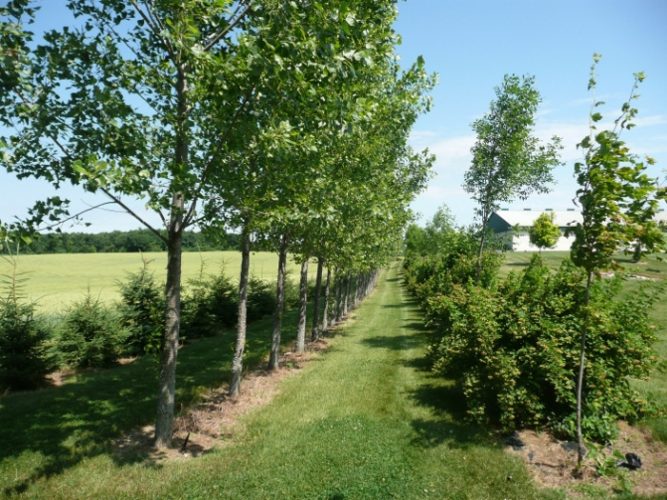Trees can be used to protect your livestock or crops. The planting of trees is an important aspect of the long and short term planning on a smallholding, as they play an important role as wind breaks and as shade givers.
A windbreak is of course a barrier placed in the path of the wind to divert its flow upwards. Trees make the most effective windbreak because they grow tall, they are long lasting and the space between them can be adapted. When the wind blows against the windbreak, some of the air passes through the branches and leaves, while the strongest part of the flow bends upwards and blows over the treetops. The wind speed is considerably lessened, with the result that the physical damage to flowers, fruit and plants, caused by hail and sand, is decreased or even prevented. The quality and size of crops are therefore improved.
Shelter your livestock
A lower wind speed offers greater protection to animals. Animals are less exposed to heat and cold, and losses as a result of deaths and decreased production are lower. The sheltering effect of trees reduces convectional heat loss from livestock in winter.
If a double row of trees is planted as a windbreak, you can use one of the rows after a while for saw-timber, poles or firewood.
Smallholders living on grassland will not have trees growing naturally on our plots and small farms. We need to introduce trees onto our properties. Windbreaks definitely increase the value and improve the appearance of a property.
When you use trees to protect your livestock and crops, do not plant them too closely to each other. An effective windbreak allows 50 % of the wind to pass through the leaves and branches.
The species of trees planted, the number of rows planted and the distance between the trees in the rows, as well as that between the rows, determines the density of the windbreak.
Shield to your crops
The windbreak must be at least twice as tall as the agricultural crops that are to be protected.

A windbreak offers protection over a distance of approximately ten times the height of the trees. If the windbreak has a height of 20 metres, for example, it can protect a crop for a distance of 200 metres. Therefore, plant your windbreaks at intervals of 200 metres.
Where winters are exceptionally cold and windy, plant windbreaks in the shape of a square, right angle or circle. The ideal shape, however, is that of a kidney.
Under certain conditions there are some tree species that offer greater advantages than others. In the cold areas where frost occurs, deciduous trees are more advantageous than evergreens. Because deciduous trees lose their leaves in winter, they allow greater air movement through the branches. This means that there is less frost. Plant evergreen trees together with more widely spaced deciduous trees within the windbreak.
Some indigenous trees, such as Buddleja saligna (false olive) and Grewia occidentalis (crossberry) grow in both winter and summer rainfall areas.
It is better to plant a variety of trees in the windbreak, to offer habitat and food to different birds and insects.
Start your windbreak with fast-growing trees and shrubs inter-planted with slower-growing trees.
Be sure not to miss an edition of the SA Smallholder ~ subscribe here. Read more on trees here.

